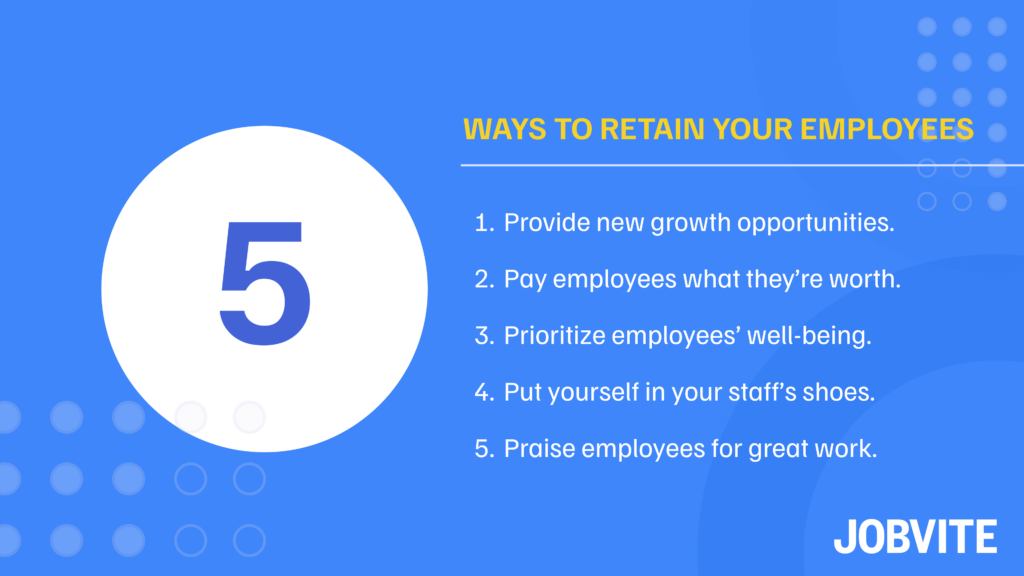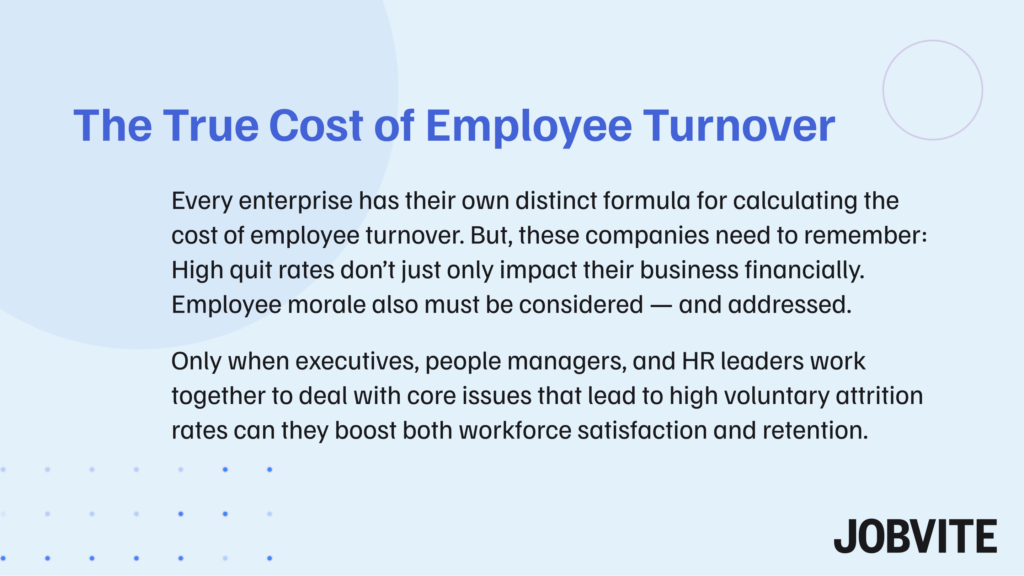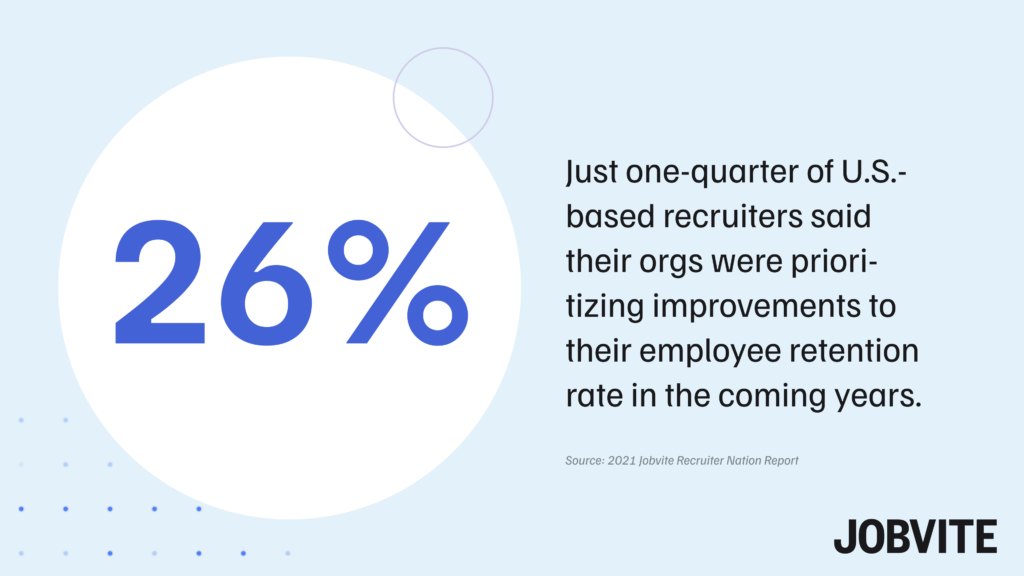
The true cost of employee turnover involves much more than just recruiting-related expenses. In fact, when an employee leaves, it can cost from one-half to two times that worker’s annual salary to replace them. That’s because losing a team member includes added costs like:
- Advertising the position your company now must backfill
- Onboarding the eventual person who accepts the offer
- Lost productivity during the time the role remains open
When you consider that voluntary attrition ranges from 12% to a whopping 60% annually (depending on your industry), it’s clear that the cost of employee turnover can quickly get out of hand.
With Bureau of Labor Statistics data showing business professionals who work across sectors and at companies of all sizes continue to exit their orgs — for reasons ranging from a lack of career development, to a poor opinion on their company culture, to insufficient pay — it’s more important than ever for large-scale companies like yours to drive down turnover and boost retention.
Calculating the cost of employee turnover
Before exploring ways you can reduce employee turnover at your org in the months and years ahead, let’s first examine what goes into the actual cost of replacing an employee for most companies today.
Unfortunately, the real cost of turnover is difficult to measure, because most businesses lack the cohesive systems needed to track relevant metrics across various departments like HR, finance, and operations. That said, there are several tangible numbers that you should keep in mind:
- Hiring costs: Recent research from SHRM shows the average cost of hiring a new, full-time employee is around $4,700. If you offer signing bonuses and relocation packages, be sure to include them in your calculation.
- Temporary employees and overtime: You may need to allocate additional budget to hiring temporary workers or paying overtime to fill the gap left by departing employees.
- Training costs: New employees often require specialized training to learn their job. TrainingMag research puts the average cost per learner at $986. But, don’t forget hidden costs, like shipping materials to remote employees.
- Time to full productivity: This is a pretty simple calculation based on average ramp-up time. If it takes the average new employee three months to fully onboard, the cost is 25% of their annual pay, six months is 50% of annual pay, and so on.
For budgeting purposes, you can either calculate this cost for each position or role, or determine the average cost across your org. Either way, the number will likely surprise you. However, it should also provide strong motivation to ensure valued employees want to stay with your company long term.
In other words? With greater insight into the actual cost of losing members of your workforce — whether they’re FTEs, contractors, or hourly employees — you will have a strong incentive to work with your HR and talent teams as well as people managers to develop a game plan.
Specifically, a plan to a) address team morale and dissatisfaction issues with your staff, and b) craft a recruiting and training strategy to find and onboard new hires who fill vacancies quickly and efficiently.

Reasons for employee turnover
Conventional wisdom says that employees change jobs to increase their pay. That’s not always the case.
While compensation (e.g., low salary, few employee benefits and perks, no stock options or 401(k) match) does often play a part in the decision to leave a job, research continues to show that pay is not the most important driver. Other factors — including communication, leadership, workplace environment, and a lack of appreciation for their work — are cited far more often.
Jobvite’s latest Job Seeker Nation Survey found that career growth is the most critical factor (56%) when looking for a new job.
Compensation is also an important consideration (54%), followed by benefits (49%) and flexible schedules (33%). An overarching theme of turnover in recent years is also workers’ desire for employee development programs to reskill and upskill and take on new roles.
All of these stats lead to one clear conclusion: employee turnover is largely preventable. In fact, a study by the Work Institute found that more than three-quarters of professionals who left a job voluntarily could have been retained by employers.
The keys to doing so are clear: Provide career opportunities, create a great workplace, and make employees feel valued. You may have to invest some money, but you’ll end up saving in the long run.

How to reduce employee turnover
Depending on the size of your org, employee turnover may be costing you tens of thousands of dollars each year. Sure, you could simply divert this cash into employees’ bank accounts.
However, your business would be far better off investing your collective time, resources, and energy to make your employees want to be part of your business for years to come.
With that in mind, here are five areas to focus on as you work to limit employee turnover.
1) Employer brand
Your employer brand refers to the way your company is perceived by both prospective customers and job candidates. In terms of your TA efforts, it’s the way you differentiate yourself to potential hires.
It’s important to establish an authentic and consistent employer brand in the marketplace, to ensure that job seekers understand who you are as a company, how you treat your employees, and whether your values align with their own — leading to fewer surprises once they’ve been hired.
2) Onboarding
It’s no secret that a significant percentage of new hires leave within the first year, or even the first six months. If you want employees to stick with your company, you need to set them up for success.
An effective onboarding program will help new employees acclimate to the company, their team, and their responsibilities — ultimately leading to a better experience. You may have to get creative with onboarding in today’s remote environment, but that doesn’t make it any less important.

3) Internal mobility
Giving employees an opportunity to grow within your company is a win-win. For employers, it turns your workforce into a robust talent pipeline. And for employees, it increases job satisfaction and creates an incentive to stay with your company for the long term.
But, building a dedicated internal mobility program takes more than good intentions.
4) Employee engagement and culture
As we mentioned earlier, workplace environment is one of the top drivers of employee turnover. Creating a culture that keeps employees engaged takes some effort, but it doesn’t have to be expensive. Even little changes can make a big difference.
Keep in mind, your company’s values have just as much impact on culture as free snacks and ping-pong tables. A recent LinkedIn study revealed that 86% of millennials would take a pay cut to work for an employer who shares their values.
5) Technology
Employees expect a simple, intuitive, and seamless experience at work that fosters creativity, enhances productivity, and encourages collaboration. Using top tools at your org leads to increased job satisfaction for employees. (Extra points if you seek their preference of work computer.)
While your C-suite and HR team focus on reducing turnover, your talent team needs leading tech to attract, engage, and convert qualified candidates. Learn how Jobvite can help.





